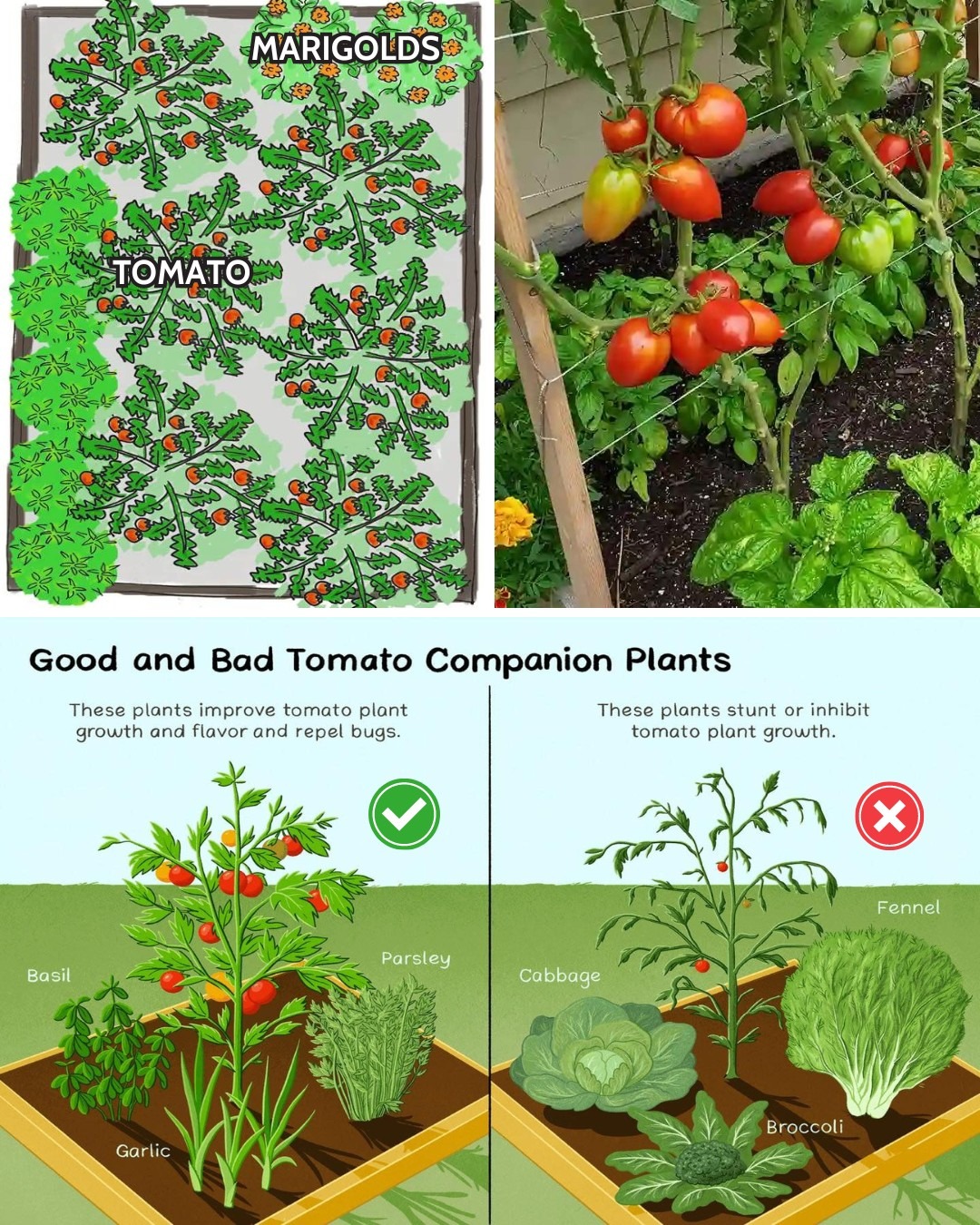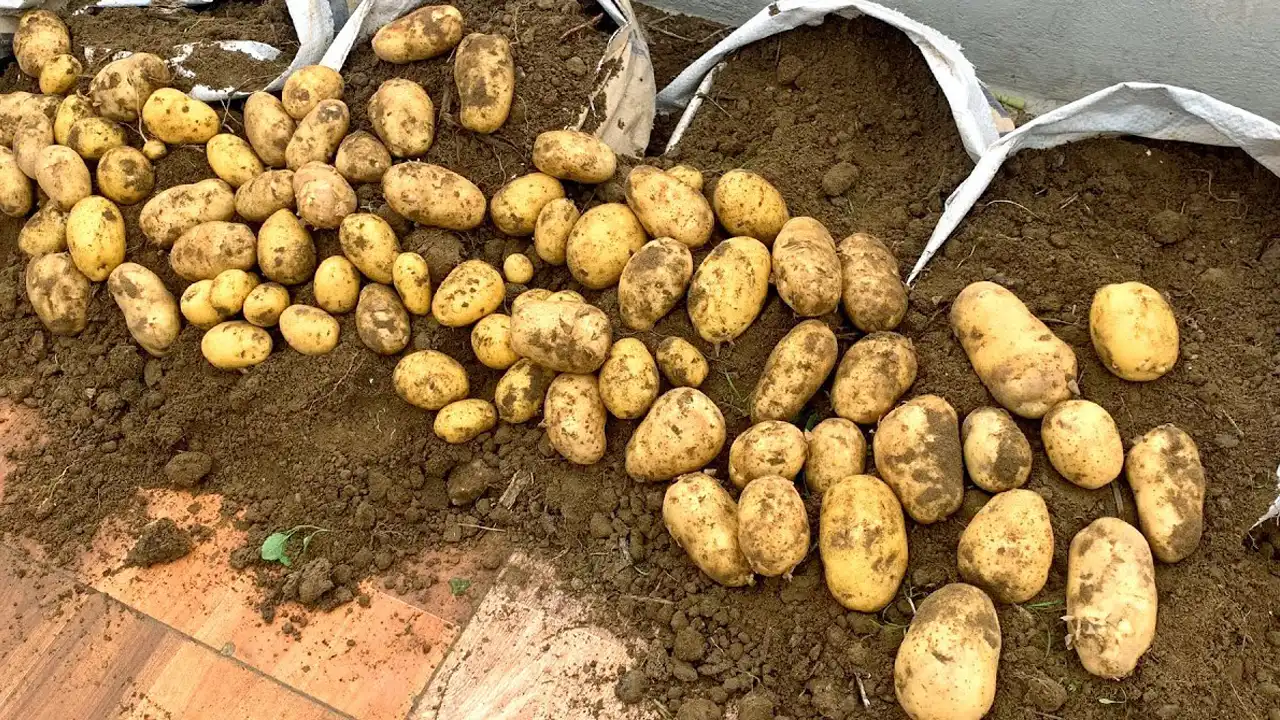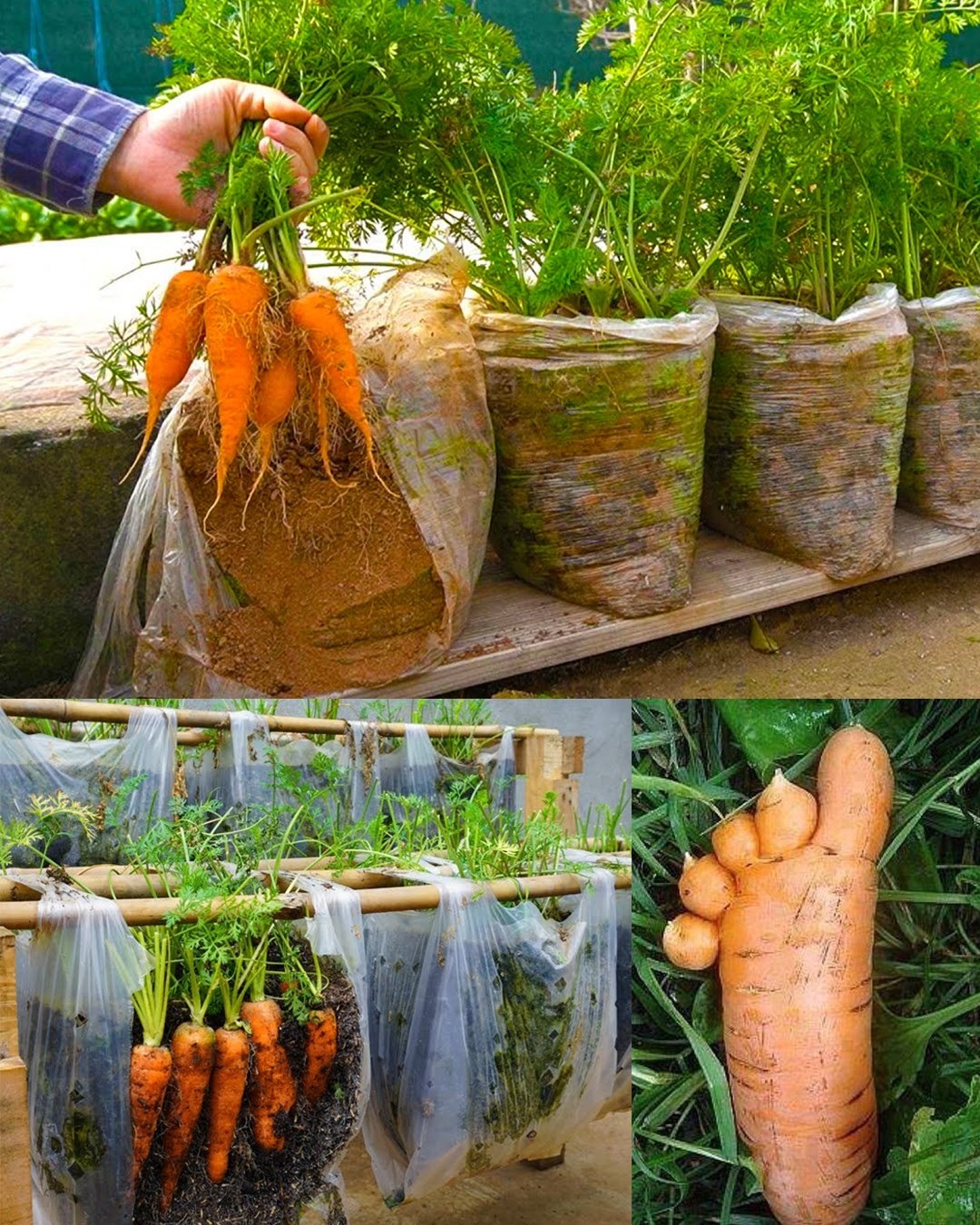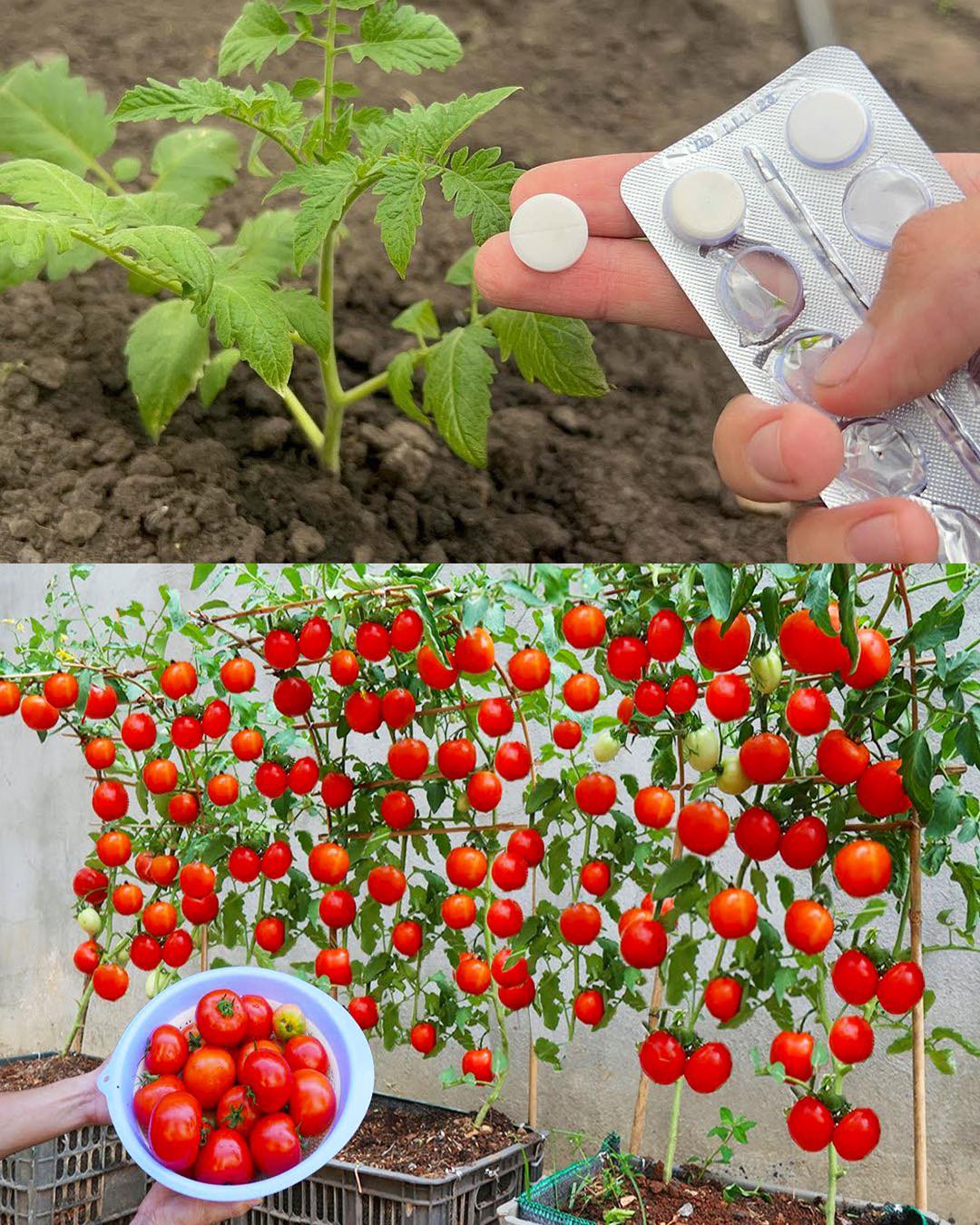Most people plant their gardens with little thought as to what plants grow well together. The secret to an amazing garden, though? Companion planting!
Companion planting not only takes nutrient uptake into consideration, but it also brings into account crop protection, pest management and positive hosting (aka. increasing the population of beneficial insects that will help manage your harmful pest population).
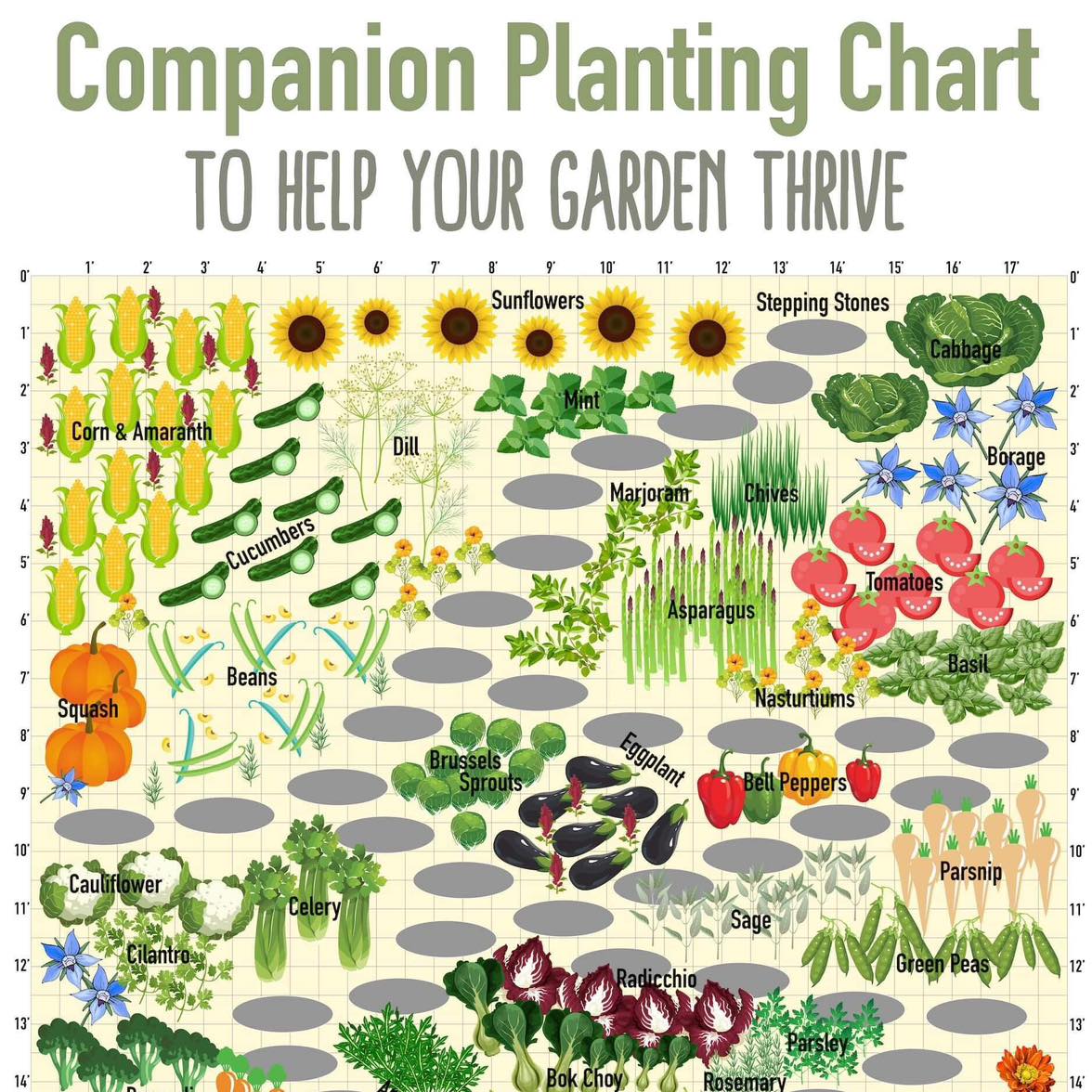
What is Companion Planting?
Companion planting is the practice of planting two or more plants together for mutual benefit. For example, certain plants might be grown together to help each other meet their nutrient requirements, growth habits, or pest-repelling abilities.
A classic example of companion planting comes from the Three Sisters trio – maize, climbing beans, and winter squash – which were often planted together by various indigenous nations across North America.
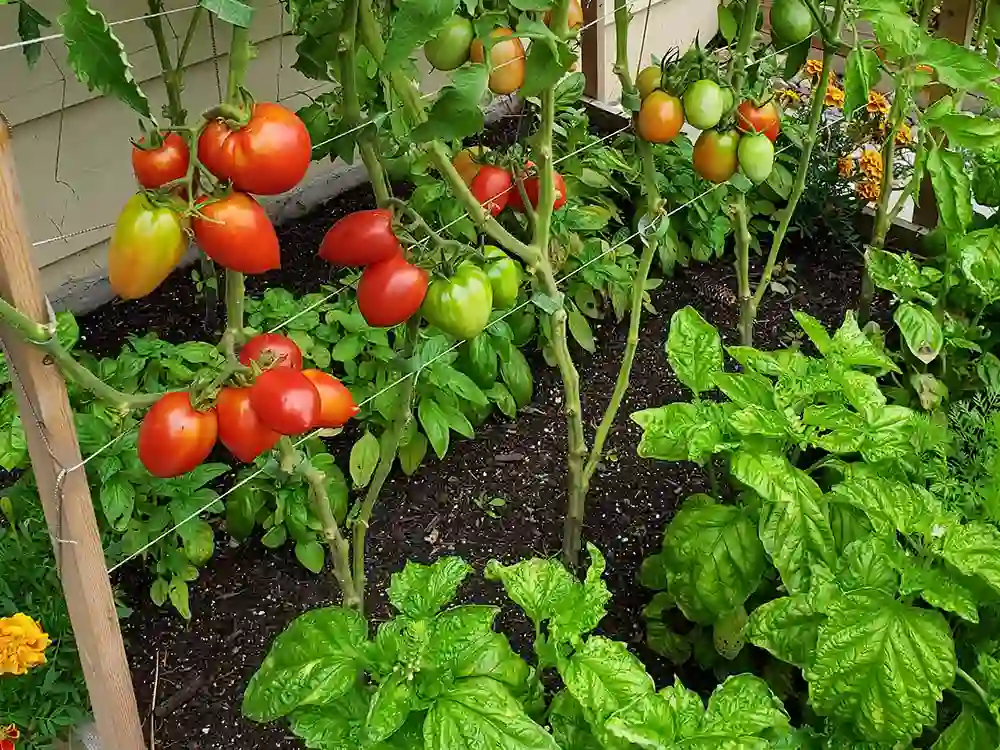
Benefits of Companion Planting
Aside from making nutrients available to other plants (and thus making them taste better), companion planting also achieves the following:
1. Minimizes Risk
If one crop fails or is affected by harsh weather, pests or disease, the overall yield of your plot may be increased by limiting the spread. To minimize risk, you’ll want to focus on creating the best natural growth patterns and diversity in your space. Avoid large monocultures (for example, a giant plot of tomatoes in one section), and instead focus on polycultures that mimick the way plants would grow in nature.
2. Crop Protection
Companion planting can offer shelter from harsh weather (like lots of wind or too much sun) to more delicate plants. Growing delicate plants next to more heartier ones that have the foliage and strength to withstand such conditions will guarantee the growth success of your smaller plants.
3. Trap Cropping
Companion planting also offers the best organic pest management. If one crop is more susceptible to pest infestation, try planting beneficial plants next to that crop that the pests despise. This will assist in protecting the pest-vulnerable plants.
4. Positive Hosting
By planting your fruit and veggies next to plants (like certain flowers) that produce a surplus of nectar and pollen, you can increase the population of beneficial insects while helping you manage your harmful pest population.
Companion Planting Chart
Use this companion planting chart as a guide so that you can design your garden in order to have better success!
Amaranth should be planted with corn to shade the soil and retain water. It also helps attract predatory ground beetles.
Asparagus can be planted with basil, cilantro, dill, marigolds, nasturtiums, oregano, parsley, peppers, sage, thyme and tomatoes. Asparagus actually repels nematodes that attack tomato plants, and tomatoes repel asparagus beetles.
Apples and Apricots surprisingly love to be planted next to garlic, but it makes sense. Garlic helps repel pests like the fruit tree bore, aphids and mites. The tree roots also absorb sulfur produced by the garlic, making the tree more resistant to fungus, mold and black spot. Marigolds are another winner for fruit trees, as they help attract pollinators (which then pollinate the flowers of the fruit trees). These flowers also help discourage nematodes in the soil, which beneficial for fruit trees.
Basil is a great herb to plant next to tomatoes to help improve their flavor. It also helps repel aphids, asparagus beetles, mites, flies, mosquitoes and tomato horn worm. For this reason, it should also be planted next to asparagus. Basil also works good when planted next to oregano and peppers.
Beans are all nitrogen fixers of the soil, so they should be planted next to plants of the Brassica family, carrots, celery, chard, corn, cucumber, eggplant, peas, potatoes, radish and strawberries. Avoid planting near chives, garlic, leeks and onion (they don’t like them!). Beets and beans should also be avoided next to one another as they can stunt each others growth.
Beets can be planted next to bush beans, Brassicas, corn, garlic, kohlrabi, leeks, lettuce, mint and potatoes. Avoid planting beets next to pole beans.
Borage is a wonderful flower and companion too many plants. It deters tomato hornworm and cabbage moth caterpillars – so make sure you plant them next to tomatoes and cabbages! Borage also attracts pollinators, so plant it around plants that need pollinating like squash, melons, and cucumbers. It is also great for the soil and compost.
Bok Choy may experience improved growth and health if it is planted alongside beets, bush beans, carrots, chamomile, chard, cucumbers, dill, kale, lettuce mint, nasturtiums, potatoes, sage and spinach.
Brassicas like broccoli, brussels sprouts, cabbage, cauliflower, collards, kale, kohlrabi and turnip all benefit from chamomile, cilantro, dill, mint, rosemary and sage. Broccoli particularly likes being planted next to potatoes for improved flavor (however, some websites note that the two prefer different soil pH – so try this combination yourself to see how it works!). Cauliflower also likes to be planted next to celery, because the strong scent of celery helps repel Brassica butterflies that can often destroy an entire cauliflower crop!
Carrots plant well with beans, Brassicas, chives, leeks, lettuce, onions, peppers, pole beans, radish, rosemary, sage, and tomatoes (quite the companion plant!). Avoid planting next to dill, parsnips and potatoes, though. Tomatoes will bring out the flavor in carrots, but your carrots might be smaller as tomatoes and carrots compete for soil nutrients.
Cherries love garlic just like apples and apricots (and for the same reasons). Garlic helps repel pests like the fruit tree bore, aphids and mites. The tree roots also absorb sulfur produced by the garlic, making the tree more resistant to fungus, mold and black spot. Marigolds also plant well with cherries, helping to attract pollinators.
Chives do great when planted next to tomatoes and carrots, as it helps bring out their flavors. Also works well when planted next to Brassicas. Chives repel aphids, carrot rust flies and Japanese beetles. They should not be planted next to beans and peas.
Cilantro repels aphids, potato beetles, and spider mites.
Corn is a companion to beans, beets, cucumber, dill, melons, parsley, peas, potato, squash and sunflower. It should not be planted next to celery or tomatoes. Amaranth can also be planted between corn rows to increase mulching (conserve soil moisture) and reduce weeds.
Cucumber loves to be planted next to asparagus, beans, Brassicas, celery, corn, dill, kohlrabi, lettuce, onion, peas, and radishes. They shouldn’t be planted next to potatoes or sage, however. Corn and sunflowers work like a trellis for cucumbers to attach on and grow upward. Dill will help cucumbers by attracting predatory insects, and nasturtiums improve the flavor and growth of cucumbers.
Dill improves the health of cabbages and other Brassicas like cauliflower and kale. It is a great companion for corn, cucumbers, lettuce and onions. Avoid planting next to carrots and tomatoes! Dill attracts ladybugs, parasitoid wasps, hoverflies, bees, and garden spiders (making it a very beneficial garden herb).
Eggplant is a good companion for amaranth, beans, marigolds, peas, peppers, spinach and thyme. Do not plant next to fennel!
Garlic is a great companion plant for roses to help repel aphids. It is high in sulfur, so it also helps get rid of pests like whiteflies, Japanese beetles, root maggots, carrot rust fly and other non-beneficial bugs. It is a great companion for beets, Brassicas, celery, fruit trees (like apricots, apples and cherries), lettuce, potatoes, strawberries, and tomatoes. Do not plant next to peas.
Lettuce like arugula, radicchio, green leaf lettuce, romaine, you name it, like to be planted next to beets, Brassicas, carrots, celery, chervil, cucumbers, dill, garlic, onions, radish, spinach, squash and strawberries.
Marigolds produce chemicals that repel whiteflies, Mexican bean beetles, root knot nematodes, and root lesion nematodes. They are great for planting around fruit trees, but should not be planted around beans.
Marjoram grows well next to all plants, and is believed to stimulate the growth of plants around it. Asparagus particularly loves asparagus. It is very attractive to bees and other pollinators, so it is great planted next to plants that need pollinating like cucumbers and squash.
Mint helps attract earthworms, overflies, and predatory wasps. It also repels cabbage moths, aphids, and flea beetles. Mint is invasive, so it is best planted on its own in containers around a garden. Do not plant near parsley.
Nasturtiums act as a great trap crop for aphids, and they also help get rid of whiteflies, cucumber beetles, squash beetles, Colorado potato beetles and Mexican bean beetles. It is a great companion flower for Brassicas, cucumbers, melons, radishes and tomatoes. They provide good cover for ground beetles and spiders, and help attract many different pollinators like bees and butterflies.
Onions love the herbs chamomile and summer savory to improve their flavor. They also work great alongside beets, Brassicas, carrots, dill, kohlrabi, leeks, lettuce, strawberries and tomatoes. Do not plant near asparagus or peas. Onions help repel the carrot rust fly, hence why they should be planted next to carrots.
Parsley likes to be grown next to asparagus, carrots, chives, corn, lettuce, onions and tomatoes. Allowing some parsley to go to bloom will help attract hoverflies and predatory wasps.
Parsnips are great when grown next to green peas, bush beans, peppers, tomatoes, lettuce, rosemary and sage. Some vegetables and herbs do not like parsnip, however, and that includes carrots, celery, dill and fennel.
Peas are wonderful companions for beans, carrots, celery, corn, cucumber, eggplant, parsley, parsnip, peppers, potatoes, radish, spinach, strawberries and tulips. Avoid planting next to onions.
Peppers make good companion plants for asparagus, basil, carrots, cucumbers, eggplant, endive, oregano, parsley, rosemary, squash, Swiss chard and tomatoes. Do not plant next to beans, Brassicas or fennel.
Potatoes like to be planted next to beets, bush beans, celery, corn, garlic, marigolds, onions, and peas. Avoid planting next to asparagus, cucumber, Kohlrabi, melons, parsnips, rutabaga, squash, sunflower and turnips.
Radishes make good neighbors for beans, beets, carrots, celeriac, chervil, cucumber, lettuce, mint, parsnip, peas, spinach, squash, and tomatoes. Avoid planting right next to potatoes. Planting radishes around your squashes will allow them to grow better and bloom, and will also prevent most pests of squash and cucumber.
Rosemary loves to be planted next to beans, Brassicas, spinach and carrots. Rosemary helps repel cabbage moths, Mexican bean beetles, and carrot rust flies.
Sage repels cabbage moths and carrot rust flies, and also helps improve the health of parsnips. Do not plant next to cucumbers, which dislike aromatic herbs.
Spinach is a great companion for Brassicas, eggplants, leeks, lettuce, peas, radishes and particularly strawberries. Do not plant near potatoes.
Squash doesn’t only love to be planted next to corn, but it also works great next to lettuce, melons, peas and radish. Avoid planting next to Brassicas or potatoes. Borage is said to improve the growth and flavor of squash. Marigolds and nasturtium help repel many different squash pests.
Strawberries respond well when coupled with beans, borage, garlic, lettuce, onions, peas, spinach and thyme. Avoid planting next to Brassicas, fennel and kohlrabi.
Sunflowers are said to increase corn yields when planted next to corn rows. Use sunflowers as a means to attract pollinators to other crops, particularly squash and pumpkins, and any other crop that requires pollinating insects.
Tomatoes are sensitive when it comes to companion planting, but they mostly benefit from asparagus, basil, beans, borage, carrots, celery, chives, collards, garlic, lettuce, marigold, mint, nasturtium, onion, parsley and peppers. Do not plant next to dill, Brassicas, corn or kohlrabi. Potatoes may spread blight to tomatoes, so do not plant nearby. Tomatoes aren’t the best of friends with cucumbers either, as they are both require lots of resources in the soil. While some people have success planting them together, others do not. Try to avoid planting them in the same space.


